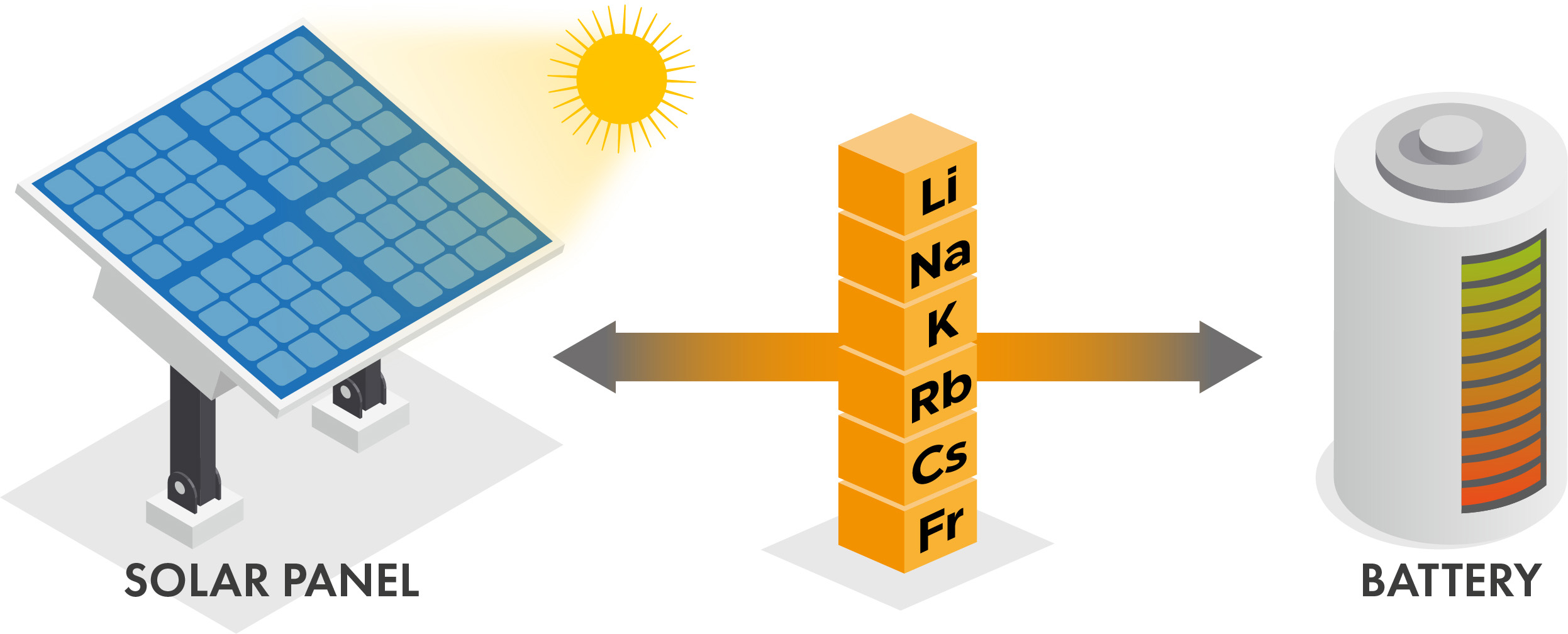Content

APT4BAT: Role of the alkalis in the solid electrolytes of battery devices. Hybrid renewable systems: combination of a solar PV with battery Storage.
A very promising way to store the generated electrical energy is the battery. With a hybrid solar cell and battery device, we would be able to mimic living systems in nature: Energy is harvested and stored.
The question is what would it be like to combine a solar cell with a lithium or sodium-ion battery (one of the most promising storage devices currently available)? The strategy for obtaining self-rechargeable lithium-ion batteries is of great importance and has recently been the subject of intense study by numerous researchers. Considering Cu(In,Ga)Se2 thin film solar cells, alkalis such as Na, K, Rb are essential dopants to ensure high cell performance with current efficiency of about 23.35%. However, alkalis such as Li and Na also play a crucial role in the ion battery. Therefore, developing a hybrid solar cell-battery device in which alkalis are shared could be a very promising strategy. More specifically, a hybrid solar cell-battery device could help suppress the biggest problem of the ion battery: Excess alkalis accumulate at interfaces and lead to interface brittleness.
However, in a hybrid solar cell-battery device, the excess Li present in the Li-ion battery can diffuse into the solar cell. This is very similar to the way alkalis are introduced into standard thin-film solar cells, i.e., they originate from the soda-lime glass substrate and are introduced into the solar device during the heat treatment process. Of course, there are many open questions in the proposed research topic related to the interface between the two available systems (solar cells and battery), such as:
- What is the influence of Li on the chemical and opto-electronic properties of the absorber layer of the solar cell?
- Are Co and Mn also diffused into the solar cell?
- What influence do they have on the overall properties of the material?
Therefore, atom probe tomography and the concept of correlative microscopy will be used to answer these open questions, but also similar open questions that exist in other existing projects.

